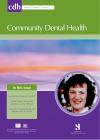Community Dental Health

- Cover Date:
- June 2012
- Print ISSN:
- 0265 539X
- Vol:
- 29
- Issue:
- 2
Income-related inequalities in chewing ability of Europeans aged 50 and above
Objective: To describe income-related inequalities in chewing ability of the elderly populations residing in different European countries. Basic research design: This study investigates income-related inequalities on basis of cross-sectional data from the Survey of Health, Ageing and Retirement in Europe (SHARE Wave 2). Participants: SHARE contains information on chewing abilities of 33,411 individuals aged 50+ from 14 different countries. Main outcome measures: Income-related inequalities in chewing ability were identified by means of Concentration Indices (CI) and Slope Indices of Inequality (SII). Results: Disproportionate concentration of chewing ability among the rich elderly populations was evident for all countries except Ireland (relative inequality according to CI). Moreover, chewing abilities were significantly better amongst individuals from the highest income groups, compared with the lowest, for all countries except Italy, Switzerland, Czechia, Poland and Ireland (absolute inequality according to SII). Denture status explained some proportion of absolute but not of relative inequalities. Conclusion: There is considerable income-related inequality in chewing ability for several elderly populations residing in Europe.
Key words: socioeconomic status, chewing, inequalities, Europe, middle aged, aging, oral health
- Article Price
- £15.00
- Institution Article Price
- £
- Page Start
- 144
- Page End
- 148
- Authors
- S. Listl, C.M. Faggion Jr.
Articles from this issue
- Title
- Pg. Start
- Pg. End
- Dental Public Health in Action - The Platform for Better Oral Health in Europe Report of a New Initiative
- 131
- 133
- Effect of national recommendations on the sale of sweet products in the upper level of Finnish comprehensive schools
- 149
- 153
- A review of strategies to stimulate dental professionals to integrate smoking cessation interventions into primary care
- 154
- 161
- When Can Oral Health Education Begin? Relative effectiveness of three oral health education strategies starting pre-partum
- 161
- 167
- Clinical evaluation of three caries removal approaches in primary teeth: A randomised controlled trial
- 173
- 178
- Relationship between gingivitis severity, caries experience and orthodontic anomalies in 13-15 year-old adolescents in Brno, Czech Republic
- 179
- 183
- Prevalence of necrotizing ulcerative gingivitis and associated factors in Koranic boarding schools in Senegal
- 184
- 187
